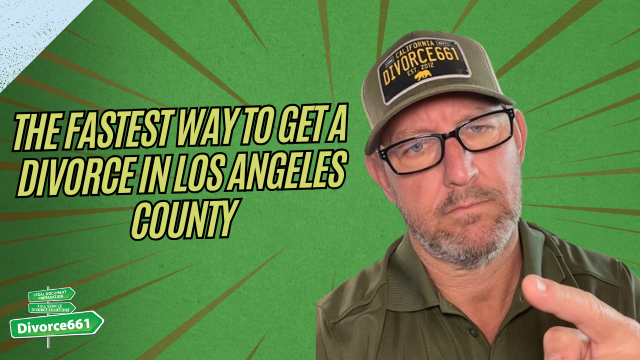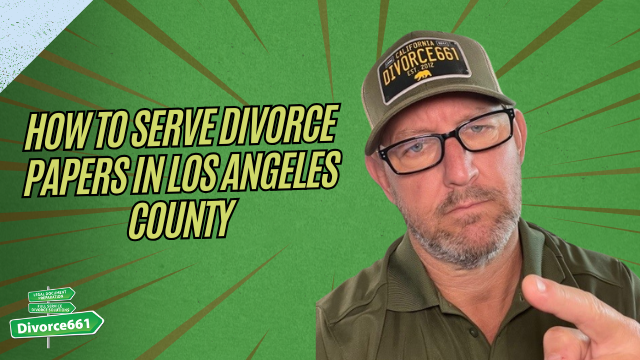How to Save Money on Divorce in Los Angeles County | Los Angeles Divorce
Hi, I’m Tim Blankenship of Divorce661. If you’re worried about how much a divorce in Los Angeles County will cost, you’re not alone. I’ve seen clients come in terrified of attorney retainers, mounting hourly bills, and lengthy court battles. The good news: divorce doesn’t have to drain your savings. In this article I’ll walk you through practical ways to save money on your divorce without cutting corners or sacrificing quality.
Why a divorce in L.A. doesn’t have to be expensive
Most people assume a divorce requires hiring a traditional attorney and going to court, and that misconception drives a lot of unnecessary expense. The real cost drivers are:
- Attorney retainers and hourly billing
- Multiple court hearings and associated filings
- Poorly prepared paperwork that gets rejected or requires correction
- Prolonged disputes over property, support, or custody
But if you and your spouse can agree on the major issues, there’s a much more affordable path.
Keep things amicable — it’s the single biggest money-saver
An uncontested divorce is always the fastest and most cost-effective option.
If you and your spouse can reach an agreement on property division, spousal support, and child custody (when applicable), you can avoid attorneys, court hearings, and long legal battles. When both parties are cooperative, the process becomes administrative rather than adversarial — and that means lower fees and a faster resolution.
Avoid hiring a traditional attorney unless absolutely necessary
You don’t always need a traditional attorney just to file for divorce, especially in California. For many amicable, uncontested cases, a flat-fee, full-service alternative will handle the entire process for a predictable price. That includes preparing the forms, filing with the court, coordinating service, drafting agreements, and submitting the final judgment — all without court appearances or hourly billing surprises.
What to look for in an alternative service
- Flat-fee pricing — no hourly billing surprises
- Full-service handling: forms, filing, service, agreement drafting, judgment submission
- Experience with Los Angeles County rules and court requirements
- Remote/phone support if you prefer not to travel
Make sure your paperwork is right the first time
One of the most common and costly mistakes is submitting incomplete or incorrect documents. Courts will reject improper filings, which wastes time and can add hundreds or thousands in additional costs when you need legal help to fix things.
I regularly see people who tried the DIY route or low-cost online services only to end up spending more to correct errors. Doing it right the first time saves months and money.
Real client example: how choosing the right service saved thousands
One client had already spent over $3,000 on attorney consultations and paperwork that was never even filed. They were frustrated and unsure whether they had to start over. We reviewed the situation, corrected the documents, and had their divorce filed and approved in under four weeks — all for a flat fee and with no court involved.
How Divorce661 streamlines the process
At Divorce661 we specialize in affordable no-court divorces in Los Angeles County. Here’s how we help you save money:
- We guide you through the agreement process so issues are resolved without litigation.
- We prepare and review all court forms to avoid rejections and delays.
- We handle filing, coordinate service, and submit the judgment — eliminating the need for court appearances.
- We charge a flat fee so you don’t get billed hourly.
- We provide remote service across L.A. County so you can complete everything without multiple trips to court.
Practical checklist to save money on your L.A. divorce
- Talk with your spouse and focus on resolving the major issues: property division, support, custody.
- Consider a flat-fee, full-service solution if your case is uncontested.
- Don’t rely on low-cost forms without review — make sure paperwork is correct before filing.
- Keep communication civil and document agreements in writing.
- Ask for a clear scope of services and total cost up front to avoid surprises.
Next steps
If you want the smartest way to save money on a divorce in Los Angeles County, start by scheduling a free consultation so someone can review your situation and explain your options. With the right approach, you can finalize your divorce quickly, avoid unnecessary court costs, and move forward without breaking the bank.
To learn more or schedule a free consultation, visit Divorce661.com — we help amicable couples in California complete full-service, no-court divorces at a predictable flat fee.
Conclusion
Divorce doesn’t have to be an expensive, drawn-out battle. Keeping things amicable, avoiding unnecessary hourly attorneys, and getting your paperwork right the first time are the most effective ways to save money. If you and your spouse can work together, a flat-fee, full-service solution is often the fastest, most affordable path to a clean break.










